As fiber optic networks continue to expand worldwide, the demand for reliable and cost-effective solutions for signal distribution grows alongside. One such essential component is the Divisor PLC. Whether you’re building a Passive Optical Network (PON) or upgrading existing infrastructure, understanding what a PLC Splitter is and how to choose the right one is crucial.
Table of contents
What is a PLC Splitter?
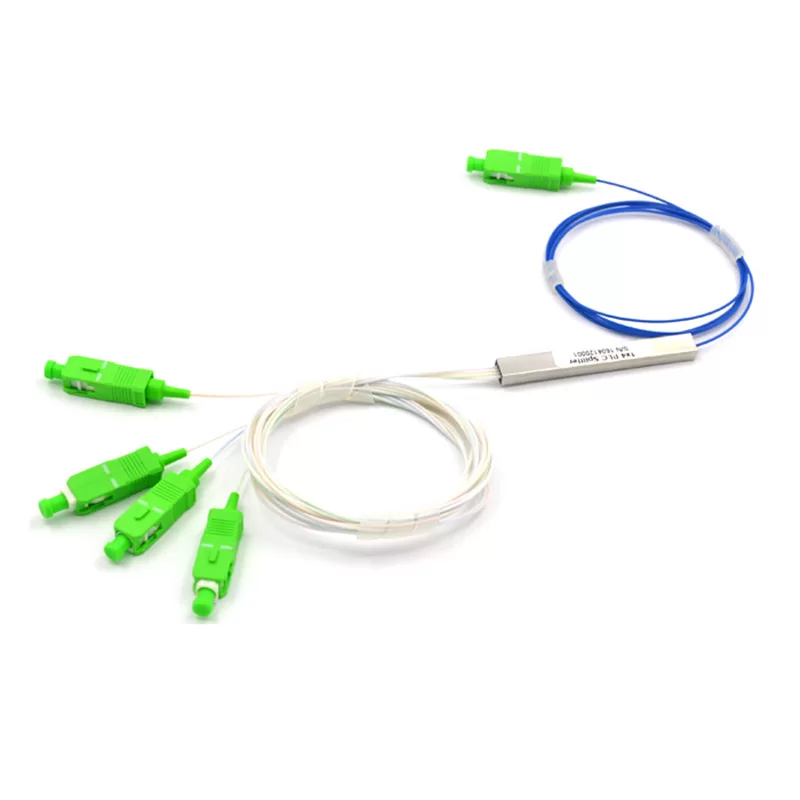

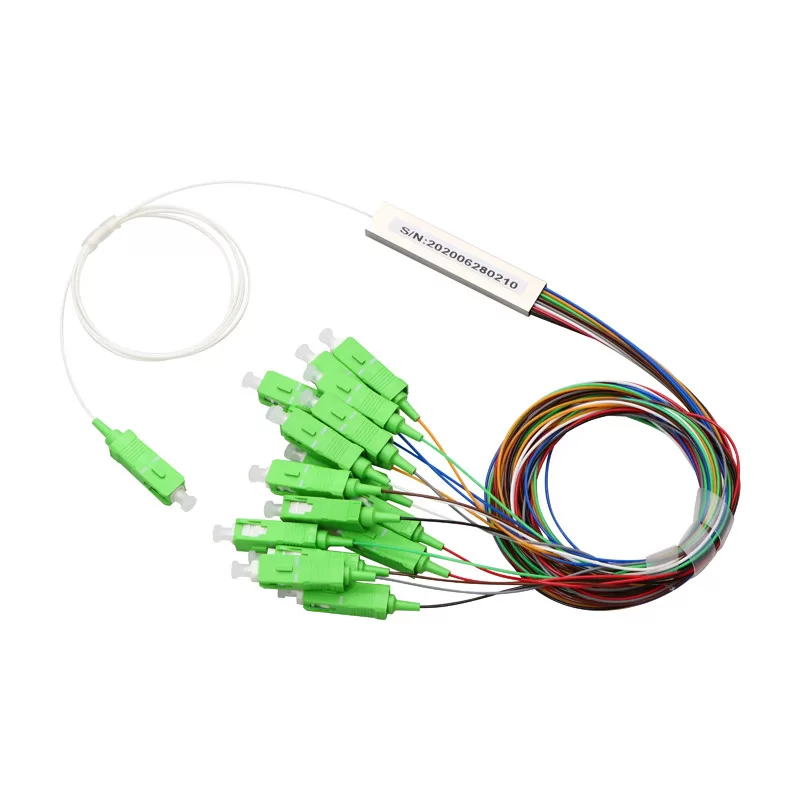
A Divisor PLC (Planar Lightwave Circuit Splitter) is a passive optical device used to divide a single optical signal into multiple outputs with uniform optical power. It plays a vital role in FTTH (Fiber to the Home) y PON (Passive Optical Network) applications, enabling one input fiber to be split into two or more output fibers, distributing data to multiple users or devices.
PLC Splitters are known for their compact size, excellent stability, and low insertion loss, making them ideal for modern high-density fiber optic networks.
How Does a PLC Splitter Work?
PLC Splitters are based on planar waveguide circuit technology. Inside the splitter, a silica glass substrate routes the incoming optical signal through a waveguide and evenly splits the light into the desired number of outputs. The uniformity in signal distribution is one of the primary benefits of PLC technology.
Unlike Fused Biconical Taper FBT Splitters, which are made by fusing optical fibers together, PLC Splitters offer better performance for high split ratios (1×16, 1×32, 1×64, etc.) and across broader wavelength ranges.
Types of PLC Splitter

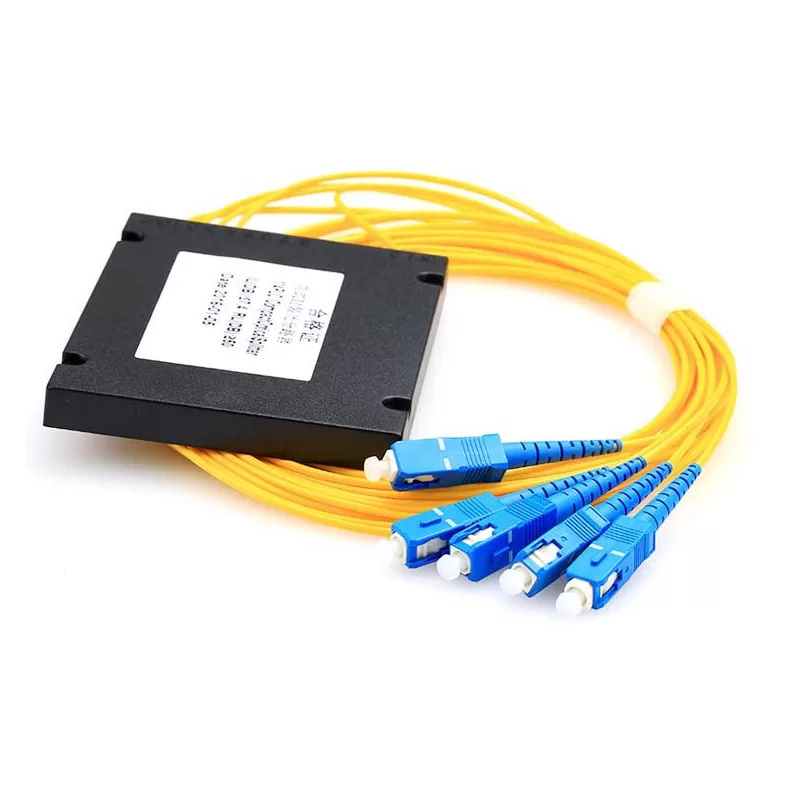
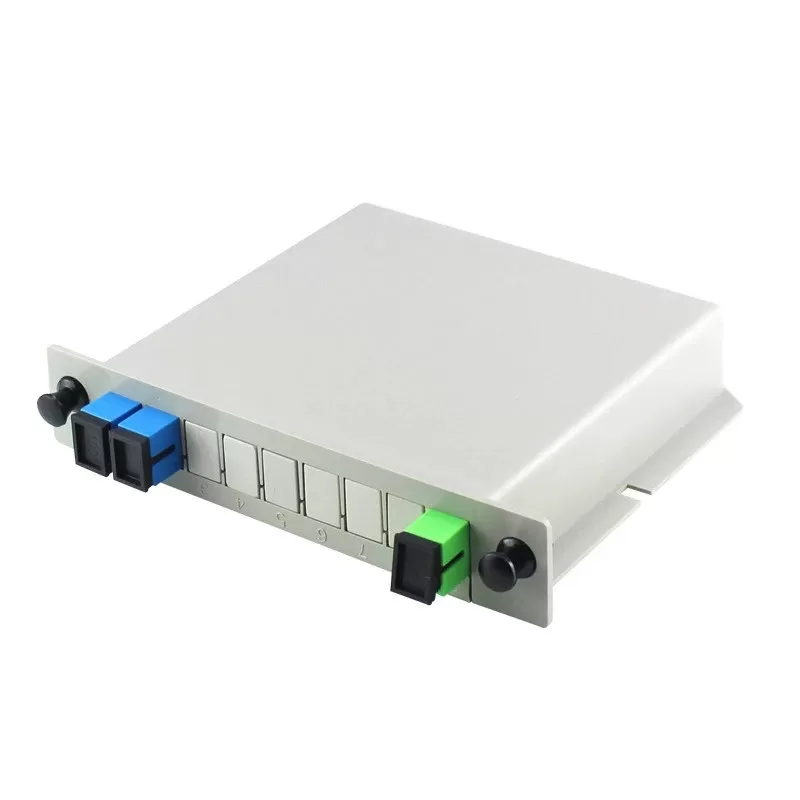
PLC Splitters are categorized based on the split ratio, form factor, and installation environment. Here’s an overview of common types:
1. By Split Ratio
- 1xN PLC Splitters: Split one input into N outputs (e.g., 1×2, 1×4, 1×8, 1×16, 1×32, 1×64).
- 2xN PLC Splitters: Split two input fibers into N outputs (e.g., 2×4, 2×8, 2×16, 2×32).
2. By Packaging Style
- Bare Fiber Type: No external protection; used in splice trays or modules.
- Blockless Type: Compact and flexible, suitable for tight spaces.
- ABS Box Type: Protected by a plastic box; ideal for installation in racks or enclosures.
- Mini Module Type: Smaller than ABS box, used in limited-space applications.
- Rack-Mounted Type: Designed for standard 19-inch racks; suitable for central offices.
- LGX Module Type: Fits into LGX chassis; easy to manage and install.
- Tray or Cassette Type: Used in fiber distribution frames (FDFs) or patch panels.
3. By Environment
- Indoor PLC Splitters: Used in data centers, central offices, and indoor cabinets.
- Outdoor Waterproof PLC Splitters: Designed with IP-rated enclosures for harsh environments.
Key PLC Splitter Specifications to Consider
When buying a PLC Splitter, these are the most important technical specifications to evaluate:
1. Split Ratio
Defines the number of output ports (e.g., 1×8 means 1 input and 8 outputs). Larger split ratios reduce signal power per output.
2. Pérdida de inserción
Refers to the amount of signal lost during splitting. Lower insertion loss is better. Example: ≤13.5 dB for a 1×32 splitter.
3. Pérdida de retorno
The amount of light reflected back toward the source. Higher return loss means better performance. Typical value: ≥55 dB.
4. Uniformity
The difference in output power levels between each port. Ideal uniformity is less than 1.5 dB.
5. Wavelength Range
Most PLC Splitters support 1260–1650 nm, suitable for all standard optical wavelengths.
6. Temperatura de funcionamiento
Make sure the splitter can handle the environmental temperature where it will be installed, typically –40°C to +85°C.
Applications of PLC Splitter
PLC Splitters are a core component in:
- FTTH (Fiber to the Home) deployments
- GPON/EPON systems
- LAN/WAN networks
- televisión por cable (Cable TV)
- Data centers
- Optical signal monitoring
In PON networks, one central OLT (Optical Line Terminal) transmits a signal that is split using PLC Splitters to reach multiple ONTs (Optical Network Terminals) at subscriber ends.
How to Choose the Right PLC Splitter
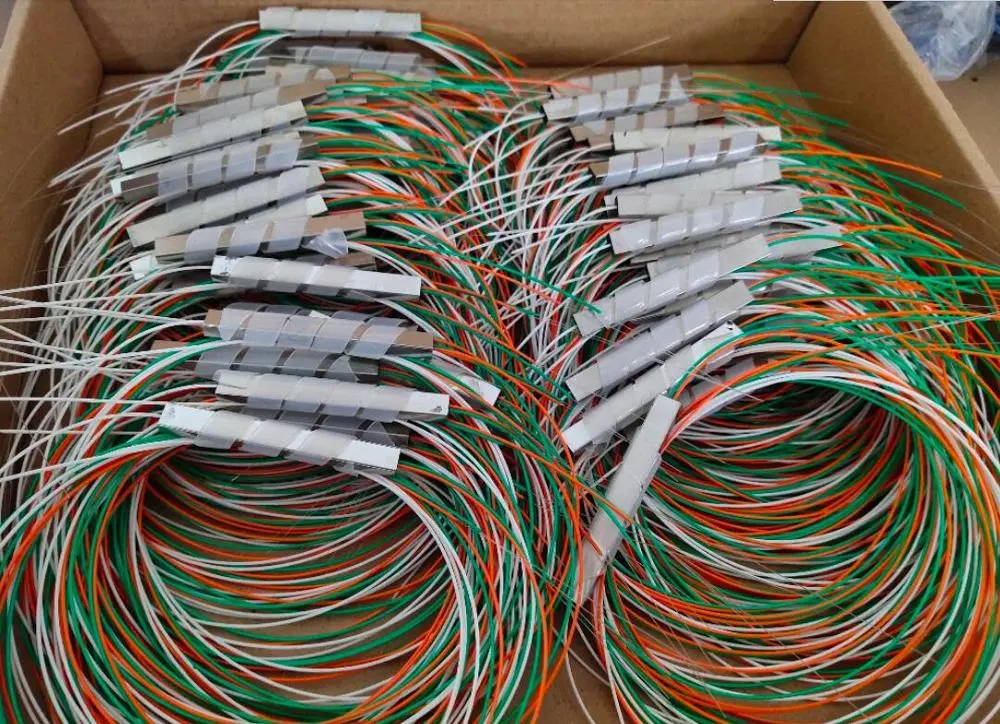
Here’s a step-by-step approach to selecting the best PLC Splitter for your needs:
1. Know Your Network Architecture
Determine whether you need a 1xN or 2xN splitter and how many users or endpoints the splitter must serve.
2. Evaluate the Environment
For outdoor or harsh conditions, choose waterproof or ruggedized splitters. For indoor use, mini module or LGX types may be ideal.
3. Consider Installation Space
If space is limited, compact splitters like blockless or bare fiber types are recommended.
4. Check Compatibility
Ensure the splitter supports your system’s wavelength, connector types (SC/APC, LC/UPC, etc.), and installation hardware.
5. Opt for Certified Quality
Look for products that comply with Telcordia GR-1209-CORE y GR-1221-CORE standards for durability and performance.
6. Cost vs. Performance
While higher split ratios save on fiber and equipment costs, they also result in higher signal loss. Balance cost with performance needs.
PLC Splitter FAQs
Q1: What’s the difference between PLC and FBT splitters?
PLC Splitters offer better performance for high split ratios, uniformity, and wavelength stability. FBT Splitters are more cost-effective for small split ratios (1×2, 1×4).
Q2: Can I use a PLC Splitter outdoors?
Yes, but you must use a waterproof PLC Splitter with an IP-rated enclosure to ensure long-term durability.
Q3: What split ratio should I choose?
It depends on how many users or devices need service. Common ratios include 1×8, 1×16, and 1×32 for typical FTTH deployments.
Q4: Does a higher split ratio affect signal strength?
Yes. The higher the split ratio, the greater the signal loss per output. Always factor in insertion loss when designing your network.
Q5: What connector types are commonly used with PLC Splitters?
SC/APC is the most common for FTTH and PON networks. Others include SC/UPC, LC/APC, and LC/UPC.
Q6: Are PLC Splitters reusable or reconfigurable?
PLC Splitters are passive components with fixed configurations. Once installed, they cannot be reconfigured.
PLC Splitter Conclusion
PLC Splitters are indispensable components in fiber optic networks, offering reliable, high-performance signal splitting for a variety of applications. When choosing a PLC Splitter, consider your network’s split ratio needs, environmental conditions, installation space, and quality standards.
By understanding the core principles and technical specifications, you can make informed purchasing decisions that enhance network performance and scalability.
If you’re ready to source high-quality PLC Splitters for your project, please feel free to reach out to us for expert guidance, competitive pricing and free samples.
Our Email: [email protected]
